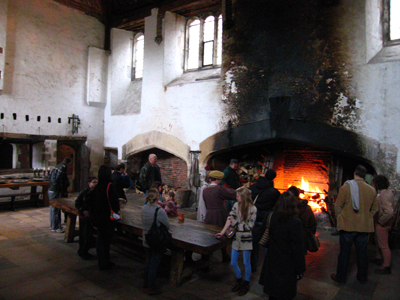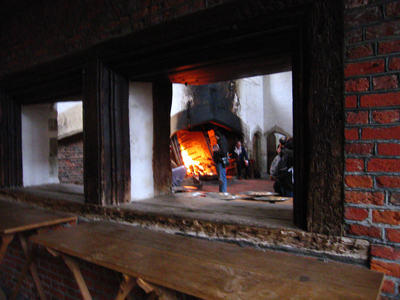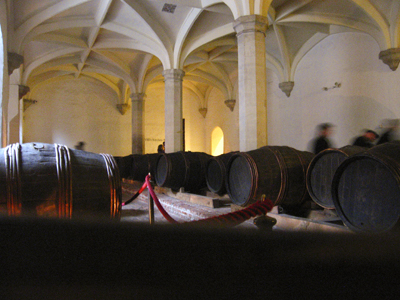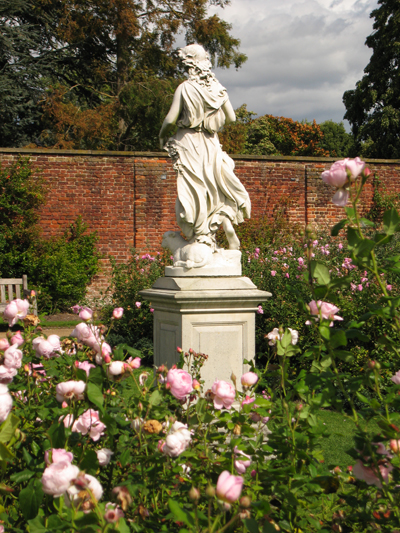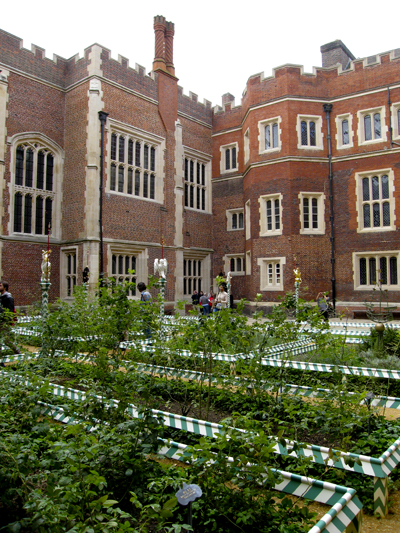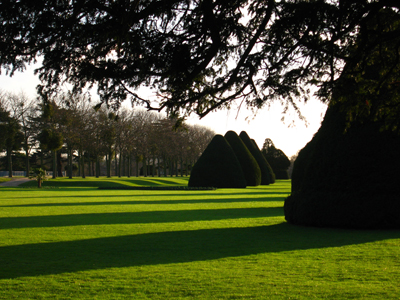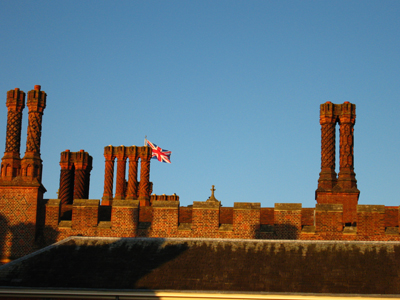Hampton Court History in Brief
Hampton Court Palace sits on the banks of the Thames in Surrey. Cardinal Woolsey transformed Hampton Court, a grand house when he acquired it, into a sprawling palace in the mid- 16th century. So impressed was Henry VIII with the Cardinal’s palace that Woolsey “gifted” it to the King (he really did not have a choice in the matter). Of all of his palaces, Hampton Court was one of Henry VIII’s favorites.
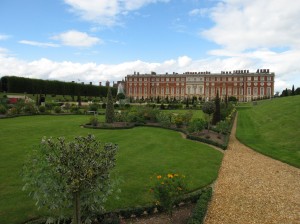 |
| The Privy Garden with crisp lawn edging the English are known for. Photo ©Heather Shimmin |
His daughter, Queen Elizabeth I, often visited the Palace; even 50 years after Henry had acquired it, Hampton Court was still one of the most magnificent palaces in the country. Her successor, James I, was an avid hunter and continued to use and enjoy Hampton Court.
With the new Regents William III and Mary II came drastic new changes to Hampton Court. They commissioned Sir Christopher Wren to redesign the palace. Originally, the plan was to demolish the entire palace and begin anew, however, lack of time and funds prevented this from happening. The monarchs had to be content with the rebuilding of the king and queen’s main apartments on the south and east sides of the palace.
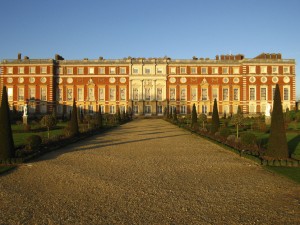 |
| Pea gravel path through the centre of the Privy Garden up to the palace. Photo ©Heather Shimmin |
The gardens around Hampton Court Palace have also undergone many transformations to keep up with the taste and fashion of the reigning monarch. Today, the Privy Garden has been restored to what it was like during the time of William and Mary, lead by the amazing landscape historian Todd Longstaffe-Gowan and landscape architect James Fox. (The pair is also responsible for the renovation of the gardens at Kensington Palace in preparation of the Queen’s Diamond Jubilee this June).
Hampton Court Palace and its gardens are enchanting. It could be my love of the Tudor dynasty that is behind my infatuation with the Palace, but putting my personal interests aside, Hampton Court Palace is an amazing property. We’re lucky to have it. By Providence or by Luck (though I’m not sure I believe in either), I’m glad that William and Mary did not have their way and bulldoze the palace to make way for another European Baroque palace.
Surprisingly, the Tudor front elevation and the Baroque rear elevation live quite happily together. The starkly different architectural styles could very easily divide the palace into two separate spaces, but I don’t think they do. This harmony, in part, is achieved in several ways:
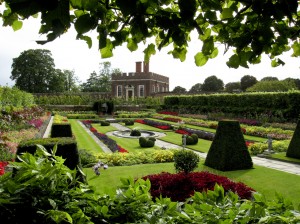 |
| The Sunken Garden Photo © 2011 Heather Shimmin |
1) one cannot look at both the front and the rear elevation simultaneously, therefore the mind may not register the dramatic difference right away;
2) the gardens at the rear of the house, particularly the Privy Garden, are designed in the Baroque tradition, which complement the rear elevation, bringing harmony and a sense of time and place to this phase of the palace; and
3) the changes on the interior of the palace are like a geological survey of the palace’s past, a peaceful amalgamation of differing styles and periods in the Palace’s life.
Hampton Court Kitchens
The Hampton Court kitchens and wine cellar were particularly interesting. During my visit, they were roasting chicken and duck on a spit in the large fireplace and had men in period costume making meat pies and pastries in another corner of the kitchen. When in full swing, the kitchen must have been a sight to behold. To the side of the large fireplace is a window where the food would have been plated and left for the footmen and servers to take up stairs to the dining hall. Around the corner is the wine cellar, which has four rows of 10 or so barrels of wine, with another sub-cellar off of the main room (which was not open to the public). Off the to side, in possibly a room for decanting or storing other liquor, is the kitchen gift shop, a very cleaver use of space and smartly put; those who are interested in finding their way to the wine cellar (which is off the main path), would be very likely to pop their head in and purchase something for their own kitchens. I, as a rule, do not like gift shops, but this was very nice. I did not have any kitsch “I (heart) Hampton Court” t-shirts or other useless souvenirs, but a selection of fine wines, cheese knives, and other such swanky kitchen utensils. The combination of setting and goods for sale was very well done.
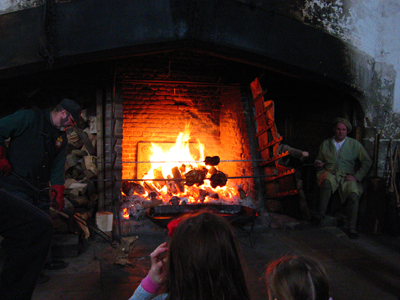
Roasting various birds on a spit for the King (who hate them later in front of a live audience, including moi). Photo ©Heather Shimmin
Centuries of soot line of wall of the great fireplace in Henry VIII’s kitchen. Photo ©Heather Shimmin
Window where food was laid out for the servers to take it to the royal table. Photo ©Heather Shimmin
Henry VIII’s wine cellar. Photo ©Heather Shimmin
As an extra draw, a merry-go-round and an ice skating rink were set up for the holidays. Hundreds of children were there enjoying the fun to be had. I’m sure the extra revenue helped the palace greatly.
Overall, I think Hampton Court Palace has done well in staying true to the site’s history, giving the visitor, as much as one can, an relatively authentic experience, and of creating various revenue-generating avenues.
More Hampton Court Pictures
Statue in the rose garden. Photo ©Heather Shimmin
Newly opened Chapel Court Tudor Garden, designed by Todd Longstaffe-Gowan. Photo ©Heather Shimmin
The infamous Yew tree in the Privy Garden, late in the afternoon. Photo ©Heather Shimmin
The instantly recognizable Tudor chimneys with their elaborate brickwork. Photo ©Heather Shimmin
BOOKS ON HAMPTON COURT PALACE AND THE TUDOR DYNASTY I’D RECOMMEND:
 |
 |
 |
 |
 |
